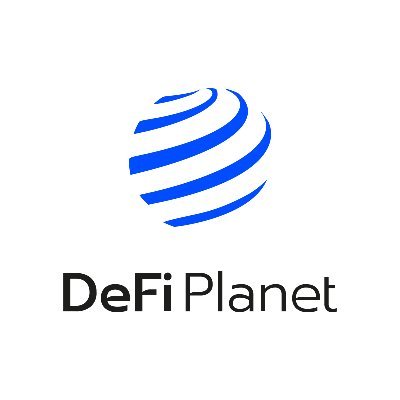
Pyth Network pricePYTH
USD
Listed
$0.08938USD
-1.96%1D
The price of Pyth Network (PYTH) in United States Dollar is $0.08938 USD.
Last updated as of 2025-11-17 14:55:43(UTC+0)
PYTH/USD price calculator
PYTH
USD
1 PYTH = 0.08938 USD. The current price of converting 1 Pyth Network (PYTH) to USD is 0.08938. This rate is for reference only.
Bitget offers the lowest transaction fees among all major trading platforms. The higher your VIP level, the more favorable the rates.
Pyth Network market Info
Price performance (24h)
24h
24h low $0.0924h high $0.09
All-time high (ATH):
$1.15
Price change (24h):
-1.96%
Price change (7D):
-2.07%
Price change (1Y):
-82.44%
Market ranking:
#100
Market cap:
--
Fully diluted market cap:
--
Volume (24h):
--
Circulating supply:
-- PYTH
Max supply:
--
Total supply:
--
Circulation rate:
0%
Live Pyth Network price today in USD
The live Pyth Network price today is $0.08938 USD, with a current market cap of --. The Pyth Network price is down by 1.96% in the last 24 hours, and the 24-hour trading volume is $0.00. The PYTH/USD (Pyth Network to USD) conversion rate is updated in real time.
How much is 1 Pyth Network worth in United States Dollar?
As of now, the Pyth Network (PYTH) price in United States Dollar is valued at $0.08938 USD. You can buy 1PYTH for $0.08938 now, you can buy 111.88 PYTH for $10 now. In the last 24 hours, the highest PYTH to USD price is $0.09023 USD, and the lowest PYTH to USD price is $0.08610 USD.
Do you think the price of Pyth Network will rise or fall today?
Total votes:
Rise
0
Fall
0
Voting data updates every 24 hours. It reflects community predictions on Pyth Network's price trend and should not be considered investment advice.
Now that you know the price of Pyth Network today, here's what else you can explore:
How to buy Pyth Network (PYTH)?How to sell Pyth Network (PYTH)?What is Pyth Network (PYTH)What would have happened if you had bought Pyth Network (PYTH)?What is the Pyth Network (PYTH) price prediction for this year, 2030, and 2050?Where can I download Pyth Network (PYTH) historical price data?What are the prices of similar cryptocurrencies today?Want to get cryptocurrencies instantly?
Buy cryptocurrencies directly with a credit card.Trade various cryptocurrencies on the spot platform for arbitrage.The following information is included:Pyth Network price prediction, Pyth Network project introduction, development history, and more. Keep reading to gain a deeper understanding of Pyth Network.
Pyth Network price prediction
When is a good time to buy PYTH? Should I buy or sell PYTH now?
When deciding whether to buy or sell PYTH, you must first consider your own trading strategy. The trading activity of long-term traders and short-term traders will also be different. The Bitget PYTH technical analysis can provide you with a reference for trading.
According to the PYTH 4h technical analysis, the trading signal is Sell.
According to the PYTH 1d technical analysis, the trading signal is Strong sell.
According to the PYTH 1w technical analysis, the trading signal is Strong sell.
What will the price of PYTH be in 2026?
In 2026, based on a +5% annual growth rate forecast, the price of Pyth Network(PYTH) is expected to reach $0.09686; based on the predicted price for this year, the cumulative return on investment of investing and holding Pyth Network until the end of 2026 will reach +5%. For more details, check out the Pyth Network price predictions for 2025, 2026, 2030-2050.What will the price of PYTH be in 2030?
In 2030, based on a +5% annual growth rate forecast, the price of Pyth Network(PYTH) is expected to reach $0.1177; based on the predicted price for this year, the cumulative return on investment of investing and holding Pyth Network until the end of 2030 will reach 27.63%. For more details, check out the Pyth Network price predictions for 2025, 2026, 2030-2050.
Bitget Insights

DeFi Planet
2025/11/09 08:04
Pyth Network Vs Chainlink
Two oracle giants feeding real-time data to DeFi apps.
Who delivers faster, cheaper and smarter?
Decode from the features👇
LINK+1.81%
PYTH+0.72%

JOYBOY-007-NIKA
2025/10/29 02:13
$BTC $ETH $SOL $XRP $BNB $FLOKI $PYTH $ARB
$TIA
---
🪙 Crypto Market Overview
The global crypto market cap is around $2.72 trillion, showing a 1.8% increase in the last 24 hours. Bitcoin and Ethereum are holding strong, while altcoins are stealing some spotlight. Investor sentiment remains bullish, with increased inflows into spot ETFs and strong activity in AI-linked projects.
---
💥 Top Coins Performance
Bitcoin ($BTC ) – Currently trading near $67,480, up 1.5% in the last 24h. BTC dominance remains above 52%, indicating market confidence.
Ethereum ($ETH ) – Up 1.1%, trading around $2,540. Analysts predict ETH could touch $2,800 in November due to institutional accumulation.
Solana ($SOL ) – Continues its rally, up 3.8% to $205, driven by DeFi activity and rising NFT volume.
XRP ($XRP ) – Steady at $0.67, with ongoing optimism about its expansion in Asian payment corridors.
BNB ($BNB ) – At $598, up 2.2%, supported by Binance’s growing launchpad ecosystem.
---
🚀 Altcoins to Watch (Future Potential)
1. (Floki Inu$FLOKI ) – Price rose 12% in 24h after the project announced new partnerships in the metaverse sector.
2. $PYTH (Pyth Network) – Strong on-chain metrics and institutional adoption make it a potential breakout AI + Oracle project.
3. $ARB (Arbitrum) – Layer-2 solution gaining traction with new DeFi integrations; price expected to climb 15–20% in Q4.
4. $TIA (Celestia) – Modular blockchain gaining developer adoption; analysts predict a bullish run toward $12–15 soon.
5. RNDR (Render Token) – Gaining buzz in the AI and 3D rendering space; Nvidia’s GPU demand indirectly supporting this coin.
---
🗞️ Major News Headlines
Bitcoin ETF inflows hit a monthly high, showing growing institutional confidence.
Solana network upgrade improved transaction speed by 30%, reducing congestion.
Ripple partners with SBI Holdings to expand XRP-based remittance solutions in Japan.
BlackRock hints at exploring tokenized assets, a big nod toward mainstream blockchain adoption.
Memecoin resurgence: PEPE and FLOKI both up over 20% this week amid retail speculation.
---
📈 Market Sentiment
Fear & Greed Index: 71 (Greed)
Investors shifting from stablecoins to BTC and ETH — showing renewed bullish momentum.
Whale accumulation visible across BTC, ETH, and SOL wallets.
---
⚡ Short-Term Outlook
Analysts expect a mild correction before another rally. Bitcoin could test $68K–$70K, while Solana and Render may lead the next altcoin wave. AI and gaming tokens are set to dominate Q4 narratives.
---
BTC+0.54%
ARB+0.50%

JOYBOY-007-NIKA
2025/10/28 03:31
---
🚀 Crypto Market Update – 28 Oct 2025 | Full Analysis
The crypto market is holding firm today as Bitcoin and Ethereum continue to anchor sentiment while a few altcoins spark fresh momentum. Optimism around a possible U.S.–China trade breakthrough has pushed global risk appetite higher, spilling over into crypto.
The total market cap sits around $3.87–$3.9 trillion, showing steady strength even after minor pullbacks.
---
💰 Bitcoin ($BTC ) Overview
Bitcoin is trading between $113,800 and $115,000, testing a crucial resistance near the $116K mark. Traders are watching closely for a potential breakout toward $120K, though the rally remains cautious.
BTC’s dominance in the market is still strong — around 59% — which means Bitcoin continues to dictate the overall crypto mood.
Recent moves have been largely sentiment-driven, powered by global optimism and institutional buying interest rather than new technical or regulatory developments.
---
🌐 Ethereum ($ETH ) Performance
Ethereum remains stable near $4,080, down slightly from its recent high of $4,249. Despite small corrections, ETH continues to hold its ground well, supported by the ongoing growth of Layer-2 networks, staking activity, and a recovering NFT ecosystem.
Investors see Ethereum’s consolidation as healthy — it’s absorbing profits while maintaining a solid base for the next potential move.
---
⚡ Altcoins on the Move
While BTC and ETH dominate headlines, a handful of altcoins are showing impressive short-term gains.
Pyth Network ($PYTH ) led the charge with a 5% jump, driven by growing interest in oracle-based DeFi projects.
Curve DAO ($CRV ) gained nearly 4.7% as liquidity pools attracted fresh capital.
Internet Computer ($ICP ) climbed around 4.6%, supported by renewed developer activity.
Quant ($QNT ) saw a 4.4% uptick amid stronger sentiment around blockchain interoperability.
And VeChain ($VET ) rose by 4.2%, maintaining steady momentum as supply-chain solutions remain in focus.
Altcoin sentiment overall is cautiously positive — not a full-blown alt season yet, but investors are rotating into select projects with stronger fundamentals.
---
🧭 Market Sentiment and Key Levels
The overall tone is cautiously bullish. Traders remain optimistic but aware of resistance zones ahead.
BTC faces strong resistance near $114K–$116K, with support at $111K.
ETH resistance sits around $4.25K, with support near $3.95K.
Macro events — especially upcoming U.S. inflation data and global policy news — could decide the next move. A positive outlook may send BTC past $120K, while negative surprises could trigger profit booking.
---
🧠 Analyst’s View
The market feels like it’s coiling for a larger move. Bitcoin’s slow, steady climb without excess leverage looks like a healthy phase of accumulation. However, many altcoins are still dependent on broader sentiment rather than strong on-chain data.
Smart traders are staying nimble — taking profits when needed and keeping stop-losses tight. For investors, patience is key until clearer macro direction appears.
---
🔍 Quick Recap
Bitcoin is consolidating near $115K, Ethereum is steady above $4K, and top-performing altcoins like PYTH, CRV, ICP, QNT, and VET are showing 4–5% daily gains.
The market remains resilient yet cautious, reflecting a blend of optimism and discipline.
---
📣 Final Thought
The market’s rhythm right now is calm but charged — Bitcoin sets the pace, Ethereum holds the tone, and a few altcoins add spark to the mix.
Keep your eyes open, manage your trades wisely, and don’t chase temporary hype.
#Bitcoin #BTC #Ethereum #ETH #CryptoMarket #Altcoins #Bitget #PYTH #CRV #ICP #QNT #VET #CryptoUpdate #TradeSmart #CryptoNews #Blockchain
---
BTC+0.54%
CRV+1.68%

Crypto7HODL
2025/10/27 16:16
📊 Top 10 Solana ecosystem crypto projects by developer activity over the past 30 days, according to Santiment:
$SOL
$W
$DRIFT
$SWARMS
$PYTH
$HNT
$JTO
$ORCA
$MNDE
$MPLX
JTO-1.36%
DRIFT-0.84%
PYTH/USD price calculator
PYTH
USD
1 PYTH = 0.08938 USD. The current price of converting 1 Pyth Network (PYTH) to USD is 0.08938. This rate is for reference only.
Bitget offers the lowest transaction fees among all major trading platforms. The higher your VIP level, the more favorable the rates.
PYTH resources
Pyth Network ratings
4.6
Tags:
Contracts:
HZ1Jov...ACQBCt3(Solana)
What can you do with cryptos like Pyth Network (PYTH)?
Deposit easily and withdraw quicklyBuy to grow, sell to profitTrade spot for arbitrageTrade futures for high risk and high returnEarn passive income with stable interest ratesTransfer assets with your Web3 walletWhat is Pyth Network and how does Pyth Network work?
Pyth Network is a popular cryptocurrency. As a peer-to-peer decentralized currency, anyone can store, send, and receive Pyth Network without the need for centralized authority like banks, financial institutions, or other intermediaries.
See moreGlobal Pyth Network prices
How much is Pyth Network worth right now in other currencies? Last updated: 2025-11-17 14:55:43(UTC+0)
Buy more
FAQ
What factors influence the price of Pyth Network (PYTH)?
The price of Pyth Network can be influenced by various factors including market demand, overall sentiment in the cryptocurrency market, technological developments, partnerships, and adoption rates.
What is the current price of Pyth Network (PYTH)?
You can check the current price of Pyth Network on Bitget Exchange or other cryptocurrency market tracking websites.
What is the price prediction for Pyth Network (PYTH) in the next year?
While predictions can vary widely, some analysts suggest that the price may increase depending on market conditions, adoption, and new developments related to Pyth Network.
How does the supply of Pyth Network (PYTH) affect its price?
The supply of Pyth Network plays a crucial role in its price; a lower supply with high demand can drive prices up, while an oversupply can lead to price decreases.
Where can I buy Pyth Network (PYTH)?
You can buy Pyth Network on various exchanges, including Bitget Exchange. Always ensure you use reputable platforms.
What are the all-time high and low prices for Pyth Network (PYTH)?
The all-time high and low prices can be viewed on crypto tracking websites or directly on Bitget Exchange.
Is Pyth Network (PYTH) a good investment at its current price?
Investment decisions should be based on comprehensive research and market analysis. It's recommended to evaluate the project's fundamentals and market trends before investing.
How often does the price of Pyth Network (PYTH) fluctuate?
Cryptocurrency prices can be quite volatile, and Pyth Network's price may fluctuate frequently throughout the day depending on trading activity and market trends.
What are the recent developments that could affect the price of Pyth Network (PYTH)?
Recent developments such as upgrades, partnerships, and market expansion efforts can significantly affect Pyth Network's price. Keeping an eye on news and announcements is essential.
What should I do if the price of Pyth Network (PYTH) drops significantly?
If the price drops significantly, it may be wise to evaluate your investment strategy. Factors to consider include the reasons for the decline, market conditions, and your investment goals.
What is the current price of Pyth Network?
The live price of Pyth Network is $0.09 per (PYTH/USD) with a current market cap of -- USD. Pyth Network's value undergoes frequent fluctuations due to the continuous 24/7 activity in the crypto market. Pyth Network's current price in real-time and its historical data is available on Bitget.
What is the 24 hour trading volume of Pyth Network?
Over the last 24 hours, the trading volume of Pyth Network is --.
What is the all-time high of Pyth Network?
The all-time high of Pyth Network is $1.15. This all-time high is highest price for Pyth Network since it was launched.
Can I buy Pyth Network on Bitget?
Yes, Pyth Network is currently available on Bitget’s centralized exchange. For more detailed instructions, check out our helpful How to buy pyth-network guide.
Can I get a steady income from investing in Pyth Network?
Of course, Bitget provides a strategic trading platform, with intelligent trading bots to automate your trades and earn profits.
Where can I buy Pyth Network with the lowest fee?
Bitget offers industry-leading trading fees and depth to ensure profitable investments for traders. You can trade on the Bitget exchange.
Related cryptocurrency prices
Dogecoin Price (USD)Shiba Inu Price (USD)Terra Price (USD)Smooth Love Potion Price (USD)Kaspa Price (USD)dogwifhat Price (USD)Worldcoin Price (USD)Ethereum Price (USD)OFFICIAL TRUMP Price (USD)XRP Price (USD)Stellar Price (USD)Solana Price (USD)WINkLink Price (USD)Litecoin Price (USD)Bitcoin Price (USD)Fartcoin Price (USD)Pi Price (USD)Toncoin Price (USD)Bonk Price (USD)Cardano Price (USD)
Prices of newly listed coins on Bitget
Hot promotions
Where can I buy Pyth Network (PYTH)?
Video section — quick verification, quick trading

How to complete identity verification on Bitget and protect yourself from fraud
1. Log in to your Bitget account.
2. If you're new to Bitget, watch our tutorial on how to create an account.
3. Hover over your profile icon, click on “Unverified”, and hit “Verify”.
4. Choose your issuing country or region and ID type, and follow the instructions.
5. Select “Mobile Verification” or “PC” based on your preference.
6. Enter your details, submit a copy of your ID, and take a selfie.
7. Submit your application, and voila, you've completed identity verification!
Buy Pyth Network for 1 USD
A welcome pack worth 6200 USDT for new Bitget users!
Buy Pyth Network now
Cryptocurrency investments, including buying Pyth Network online via Bitget, are subject to market risk. Bitget provides easy and convenient ways for you to buy Pyth Network, and we try our best to fully inform our users about each cryptocurrency we offer on the exchange. However, we are not responsible for the results that may arise from your Pyth Network purchase. This page and any information included are not an endorsement of any particular cryptocurrency. Any price and other information on this page is collected from the public internet and can not be consider as an offer from Bitget.








